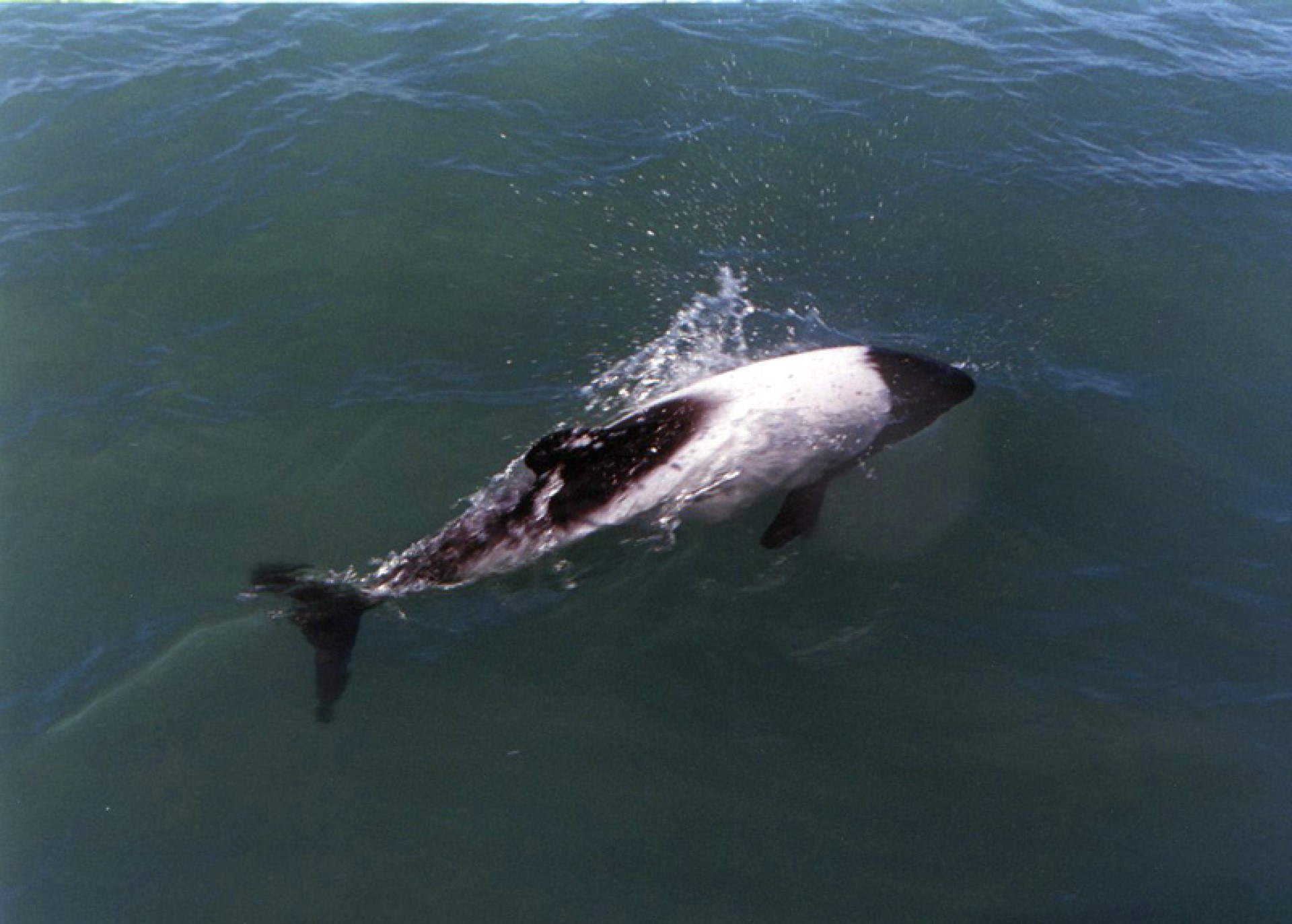
Commison Dolphin
 Commerson’s dolphin (also known as jacobita, skunk dolphin, piebald dolphin, panda dolphin, or tonina overa (in South America), is a small oceanic dolphin of the genus Cephalorhynchus. The dolphin takes its name from the French naturalist Dr Philibert Commerson, who first described them in 1767 after sighting them in the Strait of Magellan. To the right of this is a map of the Primary subspecies, the secondary subspecies lives a large distance out into the Indian ocean.
Commerson’s dolphin (also known as jacobita, skunk dolphin, piebald dolphin, panda dolphin, or tonina overa (in South America), is a small oceanic dolphin of the genus Cephalorhynchus. The dolphin takes its name from the French naturalist Dr Philibert Commerson, who first described them in 1767 after sighting them in the Strait of Magellan. To the right of this is a map of the Primary subspecies, the secondary subspecies lives a large distance out into the Indian ocean.
There are two geographically-isolated but locally-common subspecies. The principal subspecies, C.c.commersonii, has sharply-delineated black-and-white patterning and is found around the tip of South America. The secondary subspecies, C.c.kerguelenensis, is larger than C.c.commersonii, has a less-sharply delineated dark and light grey patterning with a white ventral band, and is found around the Kerguelen Islands in the Indian Ocean.
Commerson’s dolphin is very active. It is often seen swimming rapidly on the surface and leaping from the water. It also spins and twists as it swims and may surf on breaking waves when very close to the shore. It will bow-ride and swim behind fast-moving boats. It is also known to swim upside-down, which is thought to improve the visibility of its prey.
This dolphin feeds on a mix of coastal and pelagic fish and squid. Those in the South American subpopulation supplement their diets with crustaceans Individuals have been recorded as entering the Santa Cruz River to forage there during low tide. They can be found in estuaries, especially during the breeding season.
The IUCN lists Commerson’s dolphin as Least Concern in its Red List of Threatened Species. The proximity of the dolphin to the shore makes accidental killing in Gillnet a common occurrence. The dolphin was killed for use as crab Bait (luring substance) by some Argentinian and Chilean fishermen in the 1970s and 1980s, but this practice has since been curtailed. The Commerson’s dolphin population of South America is listed on Appendix II of the “Convention on the Conservation of Migratory Species of Wild Animals” Convention on the Conservation of Migratory Species of Wild Animals. It is listed on Appendix II as it has an unfavourable conservation status or would benefit significantly from international co-operation organised by tailored agreements.
There are a few of these dolphins in captivity.
Below is a video (there are clearer captive videos do have a look) below that will be a list of any stories on this species
Below that, I will add any links to people who can help you see these species in the wild.